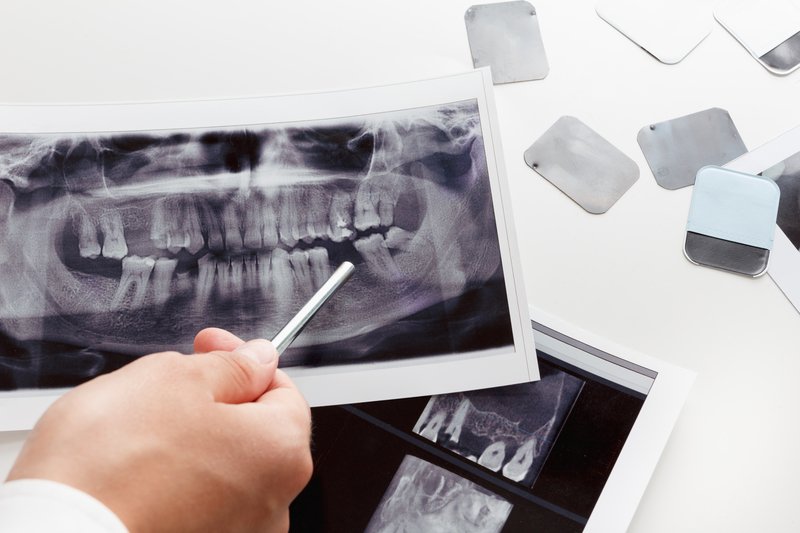
Dental X-rays are an essential tool in modern dentistry, helping dentists assess the health of your teeth, gums, and jawbone. They allow your dentist to detect issues that may not be visible during a routine examination, such as cavities, infections, or bone loss. If you’ve ever wondered what goes into taking a dental X-ray, here’s a breakdown of the process.
1. Preparation for the X-Ray
Before the X-ray begins, your dental team will take a few preliminary steps. The dentist or dental hygienist will ask if you have any medical conditions or are pregnant. It’s important to inform them about any concerns, as certain conditions might require precautions or special techniques.
You’ll be asked to wear a protective lead apron to shield your body from radiation. The apron typically covers your chest and abdomen, and sometimes a thyroid collar will be placed around your neck. While the radiation from dental X-rays is minimal, the apron helps to further reduce exposure to non-essential areas of your body.
2. Positioning for the X-Ray
Once you’re prepared, it’s time for the X-ray itself. You’ll be asked to sit in a special dental chair. Depending on the type of X-ray being taken, you’ll need to position your head and mouth in a specific way. The dental assistant may place a small X-ray sensor inside your mouth, which captures the image.
For a bitewing X-ray, a small piece of plastic film or a digital sensor will be placed between your upper and lower teeth. For a periapical X-ray, which focuses on a single tooth, the sensor is positioned near the tooth to capture the roots and surrounding bone.
In the case of a panoramic X-ray, which shows the entire mouth and jaw, you’ll be asked to bite down on a special bite block while the machine rotates around your head. This type of X-ray does not require placing anything in your mouth.
3. Taking the X-Ray
Once everything is in place, the dental team will step behind a protective barrier to ensure they aren’t exposed to any radiation. You’ll be instructed to remain as still as possible during the X-ray to ensure clear, accurate images. The actual exposure time is very short, typically lasting just a few seconds.
During this time, the X-ray machine will emit a small dose of radiation that passes through your teeth and gums to create an image of the internal structures. Digital X-rays, which are commonly used today, offer the advantage of lower radiation and immediate image results.
4. Reviewing the Images
After the X-rays are taken, your dentist will examine the images to look for any signs of dental problems such as cavities, infections, abscesses, bone loss, or impacted teeth. The dentist may also use the X-rays to plan treatment for orthodontics or implant placement.
The images are either displayed on a computer screen or printed on film, depending on the equipment used by your dental practice. Digital X-rays can be enhanced and zoomed in for a more detailed view.
5. After the X-Ray
Once your X-ray is complete, you can continue with your appointment. If additional X-rays are needed, the dental team will inform you. For routine checkups, the dentist may recommend a full set of X-rays every 1-2 years, depending on your oral health.
While there’s no recovery needed after a dental X-ray, it’s a good idea to avoid eating or drinking immediately after, especially if you were using a film-based X-ray sensor that may leave a small residue on your mouth.
6. Safety and Radiation Concerns
It’s natural to have concerns about radiation exposure. However, dental X-rays use a very low level of radiation and are considered safe for most patients. Modern digital X-rays require much less radiation than traditional film X-rays, making them even safer.
Dentists take all necessary precautions to minimize radiation exposure, and the lead apron provides additional protection for the body. If you’re pregnant or think you might be, it’s important to let your dentist know so they can take appropriate precautions.
Conclusion
Dental X-rays are a crucial part of preventive dental care. They help identify potential problems early, often before they can be detected with the naked eye. With a quick and simple process, X-rays allow your dentist to provide the best care possible, ensuring your teeth and gums remain healthy for years to come.
Next time you visit the dentist, you’ll know exactly what to expect during the X-ray process. Don’t hesitate to ask your dentist any questions you may have about the procedure.
- Tags:
- Cyprus
- Dental Scan
- X-Rays



